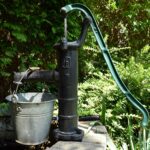Techniques to improve water cycle efficiency explained
Overview of the Great Basin Water Cycle, Techniques to improve water cycle efficiency, and more
The Great Basin’s Water Crisis: Can We Save This Arid Paradise?
The Great Basin, a land of breathtaking beauty, is facing a growing water crisis. Climate change and overuse are disrupting the region’s unique water cycle, threatening its diverse ecosystems and the communities that call it home.
But there’s hope. The Active Climate Rescue Initiative is leading the charge to find solutions, working to ensure the Great Basin has enough water for generations to come.
Join us in protecting this precious landscape. Learn about the challenges and solutions, and discover how you can make a difference.
Water Woes in the West: The Great Basin’s Water Cycle and the Challenges We Face
TL;DR – Too Long; Didn’t Read
The Great Basin is a vast desert region in the Western United States. It’s facing a serious water shortage due to climate change and overuse. To overcome this, we need to conserve water, use it smarter, and make policy changes.
The Great Basin: A Land of Arid Beauty
The Great Basin is a massive region in the Western United States, covering parts of Nevada, Utah, California, Oregon, Idaho, and Wyoming. It’s a land of mountains, deserts, and salt flats, famous for its dramatic landscapes and unique ecosystems. But, this region has a secret: it doesn’t have a lot of water!
A Unique Water Cycle
The Great Basin has a water cycle all its own. Here’s how it works:
- Evaporation: The sun heats up water in lakes, rivers, and soil, turning it into water vapor that floats up into the air.
- Precipitation: The water vapor cools and condenses, forming clouds. This water falls back to Earth as rain or snow.
- Runoff: Some of the rainwater flows into rivers and streams, but most of it sinks into the ground.
- Groundwater: This underground water supply is a vital source for the Great Basin.
Water Shortages: A Growing Problem
The Great Basin is facing a serious water shortage, which is getting worse with time. Here’s why:
- Climate Change: Climate change is causing warmer temperatures and less snowfall in the Great Basin, which means there’s less water to replenish our rivers, lakes, and groundwater.
- Overuse: We’re using more water than nature can replenish, and the population is growing, so the demand for water will continue to increase.
What Can We Do?
We need to find ways to manage our water resources more carefully. Here are some ideas:
- Water Conservation: We can all do our part by using less water at home, such as taking shorter showers, fixing leaky faucets, and watering our lawns more efficiently.
- Innovative Irrigation: Farmers can adopt new irrigation techniques that use less water, such as drip irrigation, which delivers water directly to plant roots.
- Policy Changes: We need policies that promote water conservation, protect our water resources, and encourage the development of new technologies that use water more efficiently.
Working Towards a Solution: The Active Climate Rescue Initiative
The Active Climate Rescue Initiative is a group working to address water supply shortages in the Great Basin. They focus on creating new technology to improve water conservation, like using drones to plant trees in areas where water is scarce.
A Summary of the Challenge and Solutions
The Great Basin faces a water shortage because of climate change and overuse, impacting the unique water cycle of the region. To address this, we need to conserve water, use it more efficiently, and make policy changes to protect this precious resource. Organizations like the Active Climate Rescue Initiative are working hard to find new solutions to this problem, using innovative technology and policy initiatives. We all need to do our part to ensure the Great Basin has enough water for people, plants, and animals in the future.
More on Techniques to improve water cycle efficiency…
- ## Techniques to Improve Water Cycle Efficiency:
- Water cycle efficiency improvement techniques
- Optimize water cycle for sustainability
- Enhance water cycle productivity
- Improve water use efficiency
- Reduce water loss in the water cycle
- Water conservation strategies
- Water harvesting techniques
- Rainwater harvesting and collection
- Greywater reuse and treatment
- Water-efficient irrigation systems
- Water-saving appliances
- Drought-resistant landscaping
- Permeable pavements for water infiltration
- Sustainable water management practices
- Water cycle modeling and analysis
- Water cycle optimization software
- Water efficiency policy and regulations
- Water education and awareness programs
- Water footprint reduction
- Climate change and water cycle efficiency
- Water security and water cycle efficiency
- Innovative water technologies
- ## Overview of the Great Basin Water Cycle:
- Great Basin water cycle overview
- Hydrology of the Great Basin
- Water resources of the Great Basin
- Precipitation patterns in the Great Basin
- Snowmelt and runoff in the Great Basin
- Groundwater recharge and discharge in the Great Basin
- Water use and management in the Great Basin
- Water scarcity and drought in the Great Basin
- Climate change and the Great Basin water cycle
- Environmental impacts of water use in the Great Basin
- Great Basin water conservation strategies
- Water quality in the Great Basin
- Great Basin water cycle research
- The Great Basin as a case study for water cycle understanding
- The future of water in the Great Basin
- This list is not exhaustive, and the specific keywords you use will depend on your specific needs and audience. However, this list should provide a good starting point for your SEO efforts.




